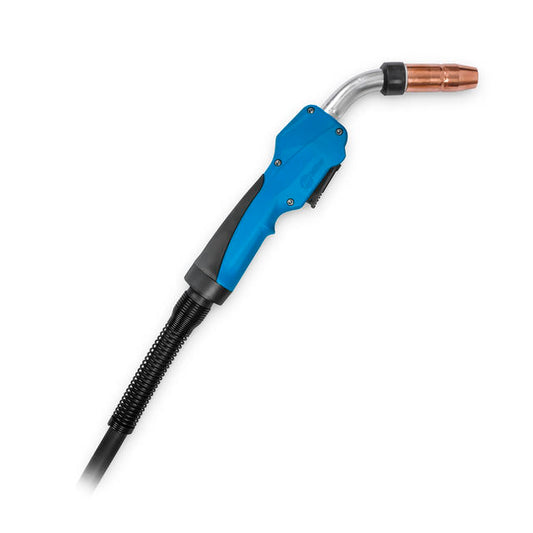MIG welding is one of the most popular welding methods in use today primarily because of its ease of use and its ability to weld continuously using a spool of wire which is fed through the MIG gun as a short consumable electrode which basically allows the welder to point and weld. While MIG welding is one of the easiest welding techniques in use, it requires a specific skill set that welders will need to learn to produce high quality MIG welds. One of these specific welding techniques is welding vertical up, which is one of the most difficult types of MIG welds.
To perform vertical up welds you will first need to open the front or side lid, depending on the model of MIG welder you are using, and locate the weld-guide-chart which lists the recommended voltage and wire speed setting for different types of metals. Once you have ensured that the settings are correctly set for the type of metal you will be working with, you are now ready to turn on your MIG welder and begin. To weld vertical up, you can practice by placing one piece of carbon steel flat on your welding table and place a second piece on top of the first to form a T.
Now that you have your metal properly laid out you will need to align the tip of the MIG gun with the intersection of the two pieces of metal and pull the trigger of the MIG gun to form a tack weld between the two pieces of metal. To ensure that you have performed a successful tack weld, it is recommended that you hold the trigger of the MIG gun for two seconds. You will need to place at least two tack welds on the pieces of metal to keep them from moving while you are working.
After you have properly performed your tack welds, you will need to place the tip of the MIG gun at the lowest point of the fillet weld joint and press the trigger of the MIG welding gun. You should now run the tip of the MIG welder across the weld joint up 3/16-inch at a 30-degree angle moving toward the center of the joint and back down 1/8-inch at a 30 degree angle (triangle pattern). Repeat this process until the entire joint has been welded vertical up. You should be creating small triangles with the weld puddle using the center of the weld joint as the top point of the triangle (some welders prefer a simple V pattern). Once you have finished welding the pieces together, check your weld bead to see if you have a good pattern and overlap, and that you achieved proper penetration. With practice, you’ll be able to add the vertical up welding technique to your set of welding skills.



